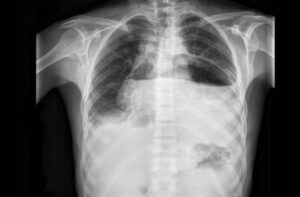This is an answer to the Case – Patient with Bilateral Tender Fluctuant Masses Over Each Elbow
A 70-year-old man presented for evaluation of tender masses over each elbow that had been gradually enlarging for several years. There was no history of joint pain. Physical examination revealed a large, erythematous, fluctuant, subcutaneous mass covering each olecranon process.
On laboratory examination, the serum uric acid level was normal (3.4 mg per deciliter [202 mmol per liter]; reference range, 2.0 to 7.0 [120 to 420]), but the serum C-reactive protein level was elevated (105 mg per liter; reference range, 0 to 5).
There was no evidence of erosive arthritis on plain radiographs of the elbows.
Biopsy of each mass revealed fibrovascular tissue with multinucleated giant cells and calcifications. Monosodium urate crystals were identified on polarized microscopical examination of the biopsy specimen.
The patient received a diagnosis of gout nodulosis, a rare presentation of gout in which nodular tophi form in the absence of gouty arthritis. Pseudogout most often involves the knees. Lipomas and rheumatoid nodules are not generally fluctuant. The mass could represent an olecranon bursitis but is not typical of a medial epicondylitis.
Treatment with allopurinol did not result in any clinically significant reduction in symptoms on repeat examination 6 months later. The patient declined to undergo surgical excision of the lesions.

